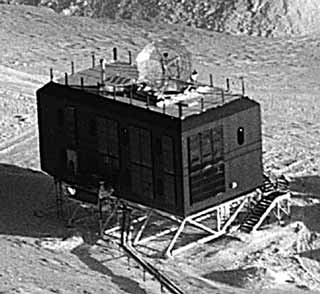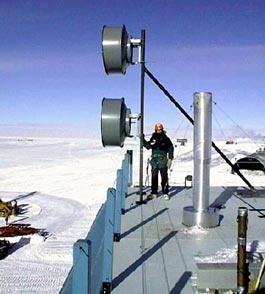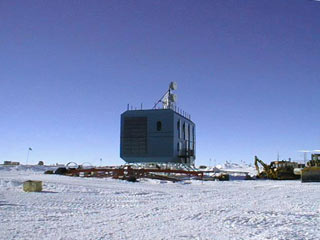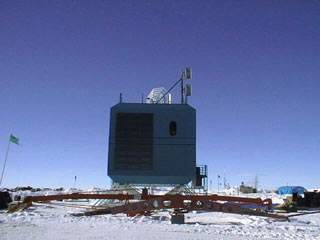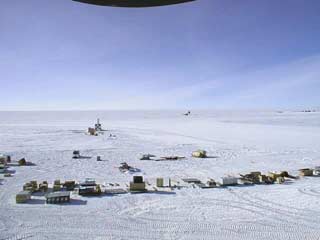1997-98 Photos - New TDRSS satellite data link
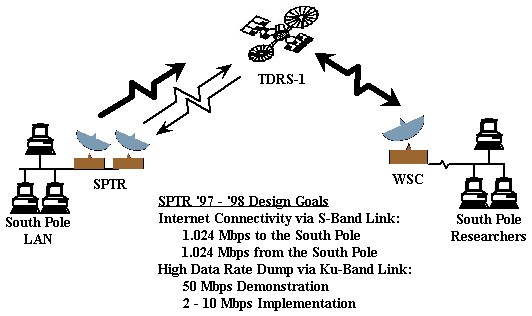 Above, an old NASA graphic depicting the original link between the South Pole TDRS Relay (SPTR) and the White Sands Complex (WSC) using the Tracking and Data Satellite (TDRS). (I should add that TDRSS is the acronym for the TDRS System.) The LES-9 and GOES-2 satellite internet links established in 1993-94 were determined to be too slow for the massive data transmission requirements expected from the upcoming AMANDA and other dark sector astronomy projects. Accordingly, NSF developed this new data link in collaboration with NASA, to use the off-orbit TDRS-1 satellite. | |
|
A couple of views of the backside of the elevated dorm showing the new antennas on the roof. And in the foreground I think that is a snow plane for leveling the runway. | |
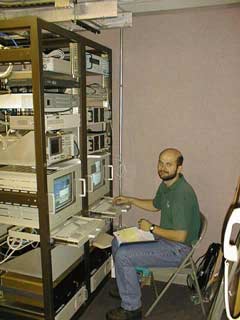 Here's Andre Fortin working on the South Pole File Server (SPFS) on the second floor of the elevated dorm. The GOES-2 equipment was also moved here from a more cramped room on the first floor. |
|
This system was considered operational on 5 January 1998, although technical link issues in the US persisted for a bit. It exceeded the initial design goals of 1.024 Mbps two-way access via S-band, and one-way data transfer of up to 50 Mbps on Ku-band (these numbers were later improved upon). Here is a brief December 1997 NASA report about the project. I'll spare you the views of the geeky photos, unless you really want to see the electronics stuff...here's the S-band parts, the Ku-band parts, and the upconverter/downconverter/SSPA boxes. A few links which get a bit more technical:
Most of the links, photos, and information seen here came from this archived NASA page. Meanwhile, over by the new NOAA Atmospheric Research Observatory (ARO), the old Clean Air Facility was being made to go away. | |
